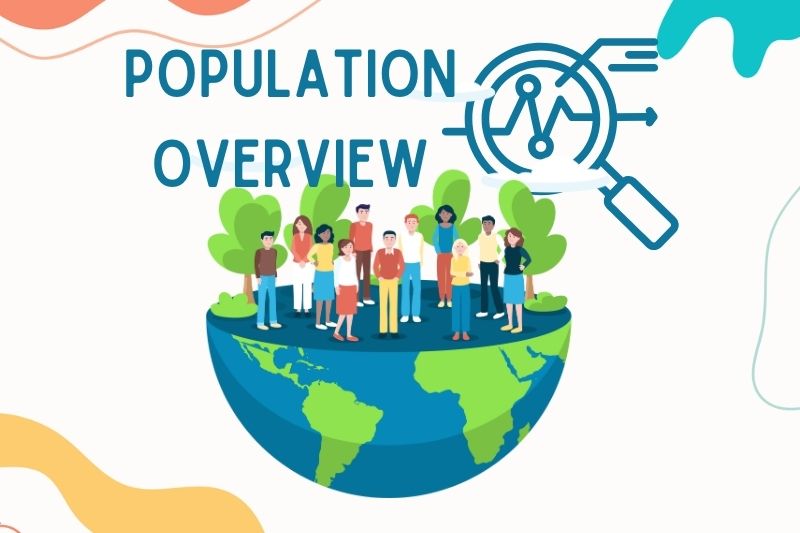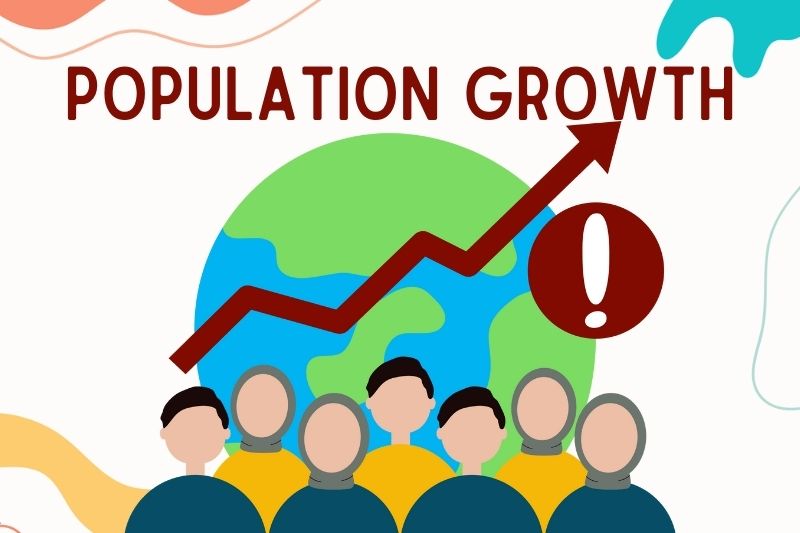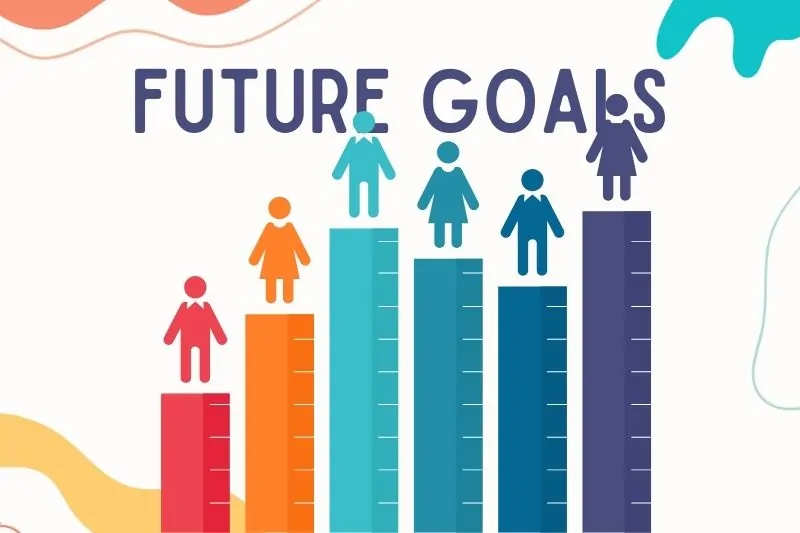Vermont is one of the states where we can see that the population has been growing for some time.
The increase is not a drastic one, but it is steady. It has been like this since the 1960s.
In the last couple of decades, we can see that numerous opportunities for economic growth of the state have appeared. Still, economic growth is a prerequisite for making economic decisions.
Today, we want to touch on the current Vermont population and what we can expect in the future, as well as explore different challenges and factors that play a role.
Current Population Overview
As of 2024, Vermont’s population stands at 647,818. This figure represents a steady growth trend observed over the past decade.
From 1960 to 2023, the population has shown a gradual increase, reflecting the state’s efforts in various developmental policies.
| Year | Population |
|---|---|
| 1960 | 390,000 |
| 2021 | 646,000 |
| 2022 | 647,000 |
In recent years, there has been consistent year-on-year growth, indicating a positive demographic trend.
This growth can be attributed to several factors, including natural population increase and net migration.
Comparing the current population with previous years, it’s evident that Vermont has successfully managed to maintain a stable growth trajectory despite various challenges.
These trends highlight the importance of understanding and addressing the underlying causes of population changes to ensure sustainable growth.
Factors Affecting Population Growth
Several factors influence Vermont’s population growth. The ongoing housing crisis has a significant impact, with a notable shortage of affordable housing options.
This shortage has led to a competitive market, making it difficult for new residents to settle in the state.
Net migration statistics show that while 26,000 people moved into Vermont, 23,000 left, indicating a relatively balanced migration pattern.
However, the housing affordability issue continues to be a major barrier to attracting and retaining residents.
The impact on the workforce and economy is also profound, as businesses struggle to attract employees due to the lack of affordable housing.
Other contributing factors include the high cost of living and the availability of job opportunities.
Employment rates play a crucial role in population growth, as they directly affect the attractiveness of the state to potential new residents.
Addressing these issues is critical for ensuring sustainable population growth in Vermont.
Population Projections and Future Goals
Looking ahead, Vermont aims to achieve a target population of 802,000 by 2035.
This ambitious goal requires a multifaceted approach, focusing on several strategic areas to foster growth and ensure sustainability.
Increasing Immigration
One of the primary strategies to boost the population is by increasing immigration.
To create favorable conditions for new residents, the state needs to:
Ensuring that there is sufficient, affordable housing is essential for attracting new residents.
This involves:
- Building new housing units.
- Renovating and improving existing housing stock.
- Offering incentives for affordable housing development.
Providing a robust job market is critical.
Efforts include:
- Attracting new businesses and supporting existing ones.
- Promoting industries with high growth potential.
- Offering job training and education programs to meet the needs of the labor market.
Climate Change Mitigation
Climate change mitigation efforts are crucial for making the state more resilient and attractive to new residents.
Key actions include:
- Sustainable Practices: Implementing and promoting sustainable practices in various sectors, such as agriculture, transportation, and energy.
- Resilience Planning: Developing comprehensive plans to address the impacts of climate change, such as extreme weather events, flooding, and changing agricultural conditions.
- Green Infrastructure: Investing in green infrastructure projects to enhance environmental quality and public health.
Coordinated Efforts
These strategies require coordinated efforts from various stakeholders, including:
- Policymakers: Legislators and government officials need to create and enforce policies that support growth and sustainability.
- Businesses: Private sector involvement is critical for economic development, job creation, and innovation.
- Communities: Local communities must engage in planning and implementing strategies to improve quality of life and attract new residents.
Regional Variations
Vermont’s population distribution varies significantly across different counties.
Some areas have experienced substantial growth, while others have seen a decline.
These regional variations are influenced by several factors, including:
- Local policies
- Economic opportunities
- Quality of life
For instance, counties with robust economic development initiatives and better infrastructure tend to attract more residents.
Conversely, areas with limited job opportunities and inadequate housing face population decline.
Understanding these regional variations is essential for developing targeted policies that address specific local needs.
By promoting balanced growth across all regions, Vermont can ensure that no area is left behind.
Local policies and initiatives play a crucial role in shaping population trends, highlighting the importance of tailored approaches to regional development.
Challenges and Opportunities
Vermont faces several challenges in achieving sustainable population growth. However, with these challenges come opportunities for strategic development and innovation.
Challenges
First, let us touch upon the challenges.
Housing and Infrastructure Development
One of the foremost challenges is the shortage of affordable housing, which is vital for attracting and retaining residents.
Without adequate housing, potential new residents may look elsewhere, and current residents might struggle with rising costs.
Alongside housing, there is a pressing need for infrastructure development, including transportation, utilities, and public services, to support a growing population.
Economic Development and Job Creation
To provide for the expanding population, Vermont needs to focus on economic development and job creation.
It includes attracting new businesses, supporting local enterprises, and fostering industries with high growth potential.
Ensuring that the workforce is skilled and adaptable is crucial. This requires investment in education, vocational training, and continuous professional development programs.
Demographic Shifts
Vermont faces the challenge of an aging population, which can strain healthcare and social services while reducing the available workforce.
The state also experiences youth out-migration, where young residents leave for opportunities elsewhere, leading to a potential future workforce gap.
Equitable Growth
Ensuring equitable growth across all socioeconomic groups is a significant challenge.
Policies must be inclusive, addressing the needs of marginalized and disadvantaged communities to create a balanced and fair society.
Opportunities
Despite these challenges, there are several opportunities for growth and development in Vermont:
Investment in Housing Development
By investing in affordable housing projects, Vermont can attract new residents and retain current ones.
It includes leveraging state and federal funds, public-private partnerships, and innovative financing models to build and renovate housing stock.
Emphasizing sustainable and energy-efficient housing can attract environmentally conscious residents and reduce long-term costs.
Enhancing Job Opportunities
Strategies to attract new businesses and support existing ones can lead to job creation. This includes providing incentives, reducing regulatory barriers, and creating a business-friendly environment.
Targeting industries with high growth potential, such as technology, renewable energy, and healthcare, can provide diverse and high-paying job opportunities.
Promoting Inclusive Policies
Developing policies that promote inclusive growth ensures that all residents benefit from economic development.
It includes investing in education, healthcare, and social services that support underrepresented communities.
Engaging local communities in the planning and decision-making process can lead to more effective and accepted policies, fostering a sense of ownership and participation among residents.
Summary
Vermont’s population trends highlight key areas for improvement and development.
Addressing housing, economic opportunities, and demographic shifts is essential for sustainable growth.
Policymakers and stakeholders must collaborate to create a thriving future for all residents.
Related Posts:
- Pittsburgh Population in 2025 - 8 Surprising Statistics
- Nebraska Population Statistics for 2025 - An In-Depth Look
- Arizona Population Statistics 2025 - 12 Key Data and…
- Boston Population 2025 - Key Statistics and Trends
- Tucson, Arizona Population 2025 - Latest Growth…
- South Dakota Population in 2025 - Key Statistics and…












